Table of contents
Who is the Orixá Ogum?
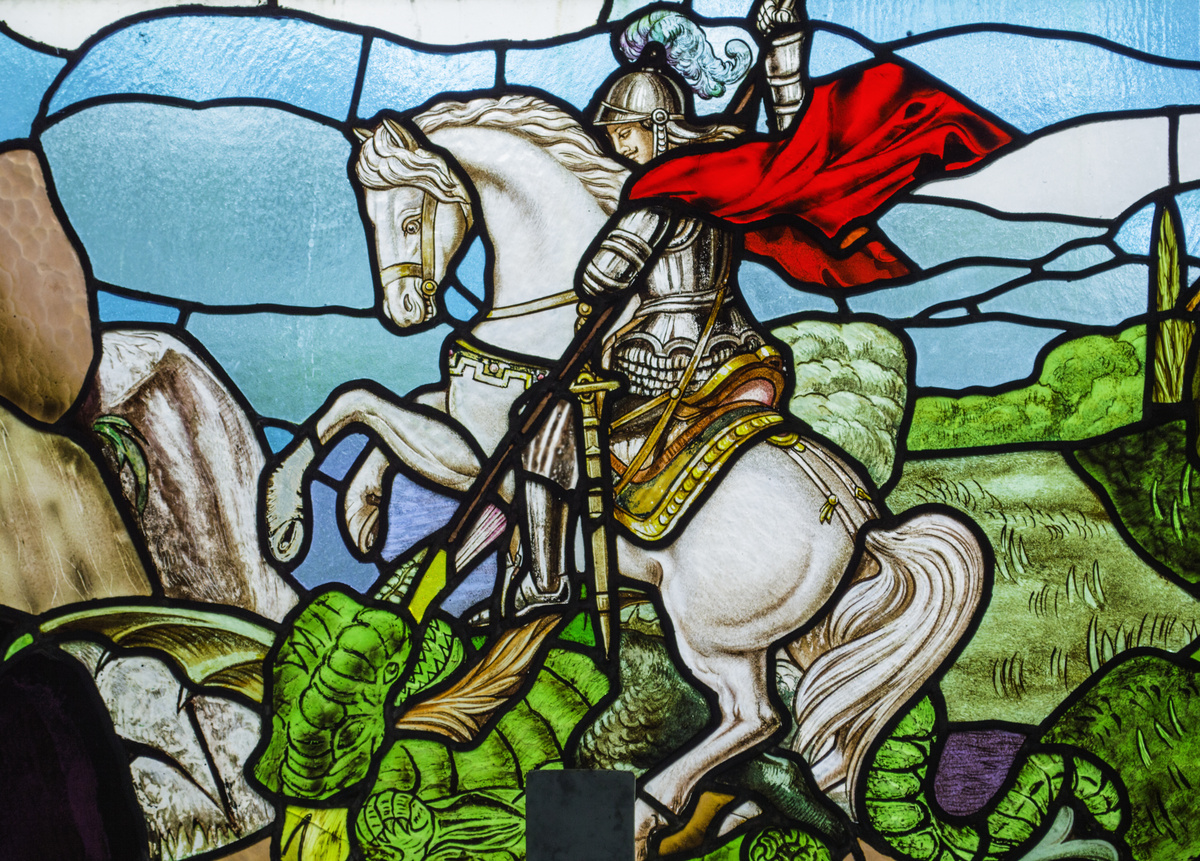
Ogum is a male Orixá that perfectly represents the archetype of the warrior, being the owner of the paths and responsible for human progress. Known for his strength and vibrant energy, Ogum is widely associated with victory and helps humans in their conquests on a daily basis, since he symbolizes the force present in nature that drives the being.
Besides being the god of war, Ogum is also the executor of cosmic laws. Thus, while the Orixá Xangô creates the laws, Ogum applies them and checks who obeys them. Ogum is the opposite of Xangô when it comes to rationality, since Xangô represents the rational side and Ogum is mostly emotional, although he is also impartial in his conduct.
The history of Ogum
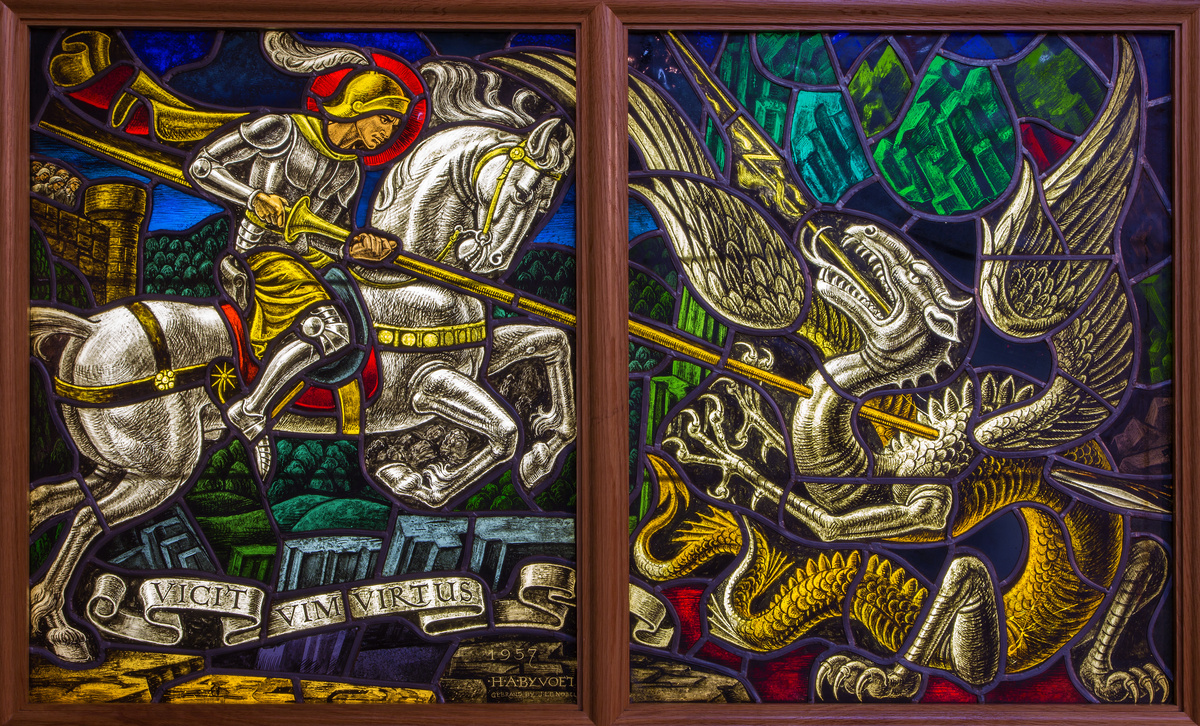
Ogum warred for his father, Odúduá, who was king of Ifé, and in one of his conquests, Ogum named his son as king of the conquered place: the kingdom of Irê. Given this, he continued his battles, while the citizens of Irê honored Ogum once a year with total silence and empty bottles of palm wine.
Upon returning to Irê on a day of silence in his honor after 7 years of battle, Ogum was seized by fury at what seemed like the negligence of the citizens and killed everyone. He only stopped when his son, who was king, and his brother, Exu, warned him that this was a tribute to Ogum and therefore all was silent. Repentant, Ogum stuck his sword in the ground and became an Orixá.
Ogum in Umbanda
Ogum is the General of Umbanda, the Knight of Aruanda. Whoever has heard this point can understand a very important aspect of Umbanda: Ogum, besides being an Orixá, commands several spiritual phalanxes that act in his name.
The spiritual phalanxes of Ogum consist of a group of disincarnate entities that have reached a high level of spiritual evolution, vibrating in tune with the Orixá Ogum. This concept of spiritual phalanx has influences from Spiritism, and it categorizes a group of spirits who vibrate at the same energy.
Even so, it is important to point out that Ogum is also an Orixá in Umbanda, as well as in Candomblé. He even has the same archetype, being the lord of war, of progress, of iron and the executor of divine laws.
Ogum in Candomblé
Responsible for teaching the forge to the human being, Ogum is the Orixá of advance and war in Candomblé. In fact, he is the second closest Orixá to the human being, second only to his brother Exu. It is worth noting that there are no spiritual phalanxes of Ogum in Candomblé, since this religion is not as strongly influenced by Spiritism as Umbanda.
There are several itãs about Ogum in Candomblé, tales about this Orixá, representing various stories that happened with him. These itãs are metaphorical representations that allow teaching about the energetic vibration and action of the Orixá Ogum, passing this knowledge through several generations.
Its origin
Ogum's origin is human, as the supreme warrior of the kingdom of Ifé, working for his father. He has always been a very strong fighter and has a certain impulsive character, which can harm him on certain occasions, such as in the itã when he delayed as long as possible to ask Exu for help during a siege he was carrying out on an enemy city.
As an Orixá, he became indispensable to the other deities because of his iron-based technology. Thus, he is the second to receive offerings, after Exu who is the messenger of the Orixás. After all, when making an offering to Ogum, one will use his knives and metal equipment to make offerings to other Orixás, except Nanã, who refuses the use of metal.
His passion for Oxum
Oxum is the Orixá of fertility, being very similar to the Greek archetype of Aphrodite, which makes her very seductive, beautiful and wise with words. Therefore, Oxum is an Orixá extremely persuasive and conqueror, with her unique style.
There is an itã in which Ogum gives up living with the other Orixás, these being dependent on Ogum's tools. Once this was done, the Orixás despaired and all of them went in search of Ogum, but none of them succeeded. After all, Ogum was a warrior and a strategist, and it was very difficult to capture him.
After that, Oxum goes to Ogum to seduce him with her dance. Ogum, hypnotized by Oxum's beauty and lightness, returns to the village where the other Orixás stay. In this way, the itã reveals Ogum's passion for Oxum, representing the compatibility between the energies of these Orixás, being Ogum the passionate and impulsive one and Oxum the emotional tranquility one.
His fight with Xangô
Xangô and Ogum represent the duality between reason and emotion, and the story of the fight between the two represents the dilemma between being rational or passionate in a given situation. For this, an itã was created in which Xangô and Ogum warred to see who would be the pair of the Orixá Iansã.
In the end, Ogum was defeated and Iansã became queen in the crown of Xangô, Orixá who was king when he was alive. Even the weapon of victory was a paste of okra that Ogum stumbled on the battlefield, being okra a vegetable that represents wisdom, showing the importance of rationality represented by Xangô.
The syncretism of Ogum

The Orixá Ogum is syncretized with two catholic saints, depending on the place where he is worshipped, with Mars or Ares in the Greco-Roman mythology and with Visvakarma, in the Hindu religion. Check the main characteristics and discover why Ogum is syncretized with each one of them.
Saint George
Saint George was a person who was beatified when he disincarnated, becoming a saint. This is a warrior saint who is known for riding on his horse and slaying the dragon that represents the demands of life. Therefore, he is syncretized with Ogum, the warrior Orixá.
Saint Anthony
Saint Anthony is only syncretized with Ogum in the state of Bahia, while Saint George is the saint corresponding to this Orixá in the rest of Brazil. It is worth noting that Saint Anthony is one of the most famous Catholic saints, having its celebration in June and being widely associated as a matchmaker saint.
Mars or Ares in Greco-Roman mythology
Mars is the Roman counterpart of the god Ares of Greek mythology. Based on this, it can be said that Ares is the god of war, being highly combative, impulsive and a brute symbol of strength. Because these characteristics coincide with Ogum, these figures are syncretized.
Visvakarma in Hindu mythology
Just as Ogum is responsible for creating the tools for each Orixá, because of metallurgy, Visvakarma is also a creator of tools for various deities in Hinduism. In addition, these two figures are powerful and are symbolized by strength.
The qualities of Ogum
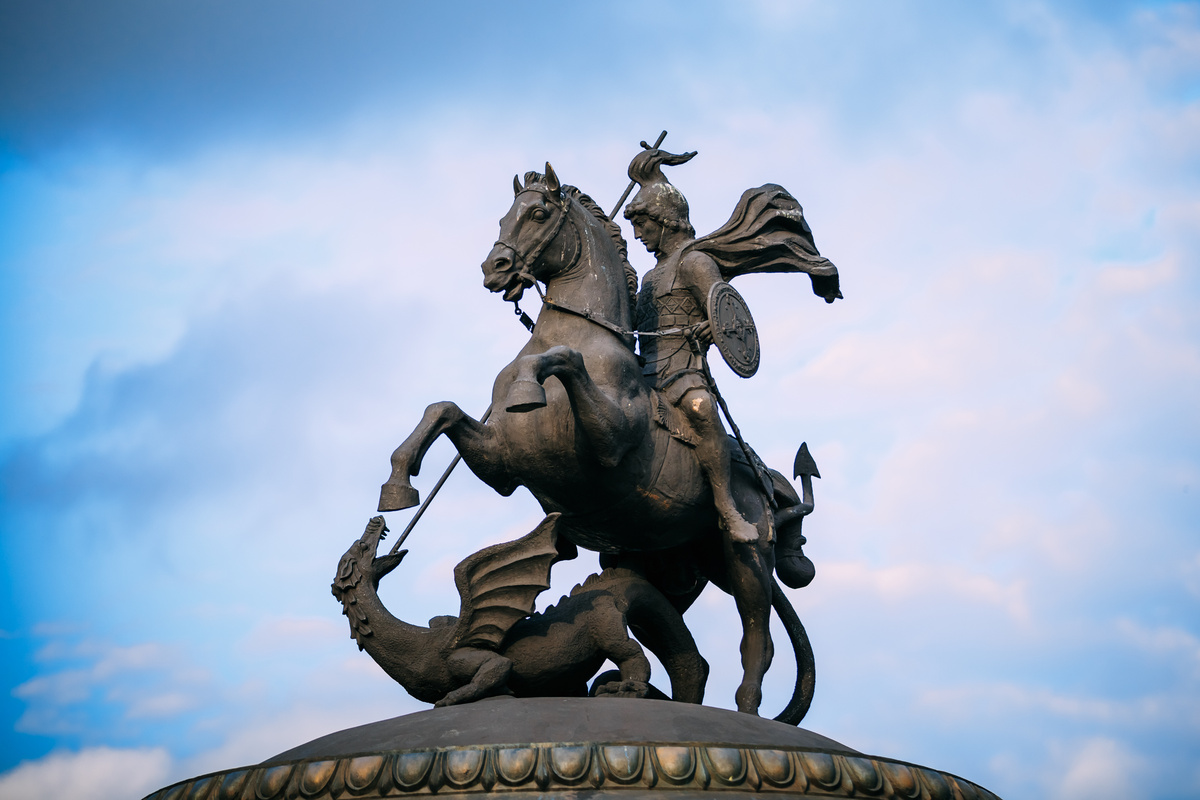
There are several qualities of Ogum, with different characteristics in personality and fields of action. Some act in the forest, others are warriors and many more peculiarities for each quality. So, check out about the following qualities of Ogum Akoró, Megé, Wáris, Oniré, Amené, Ogunjá and Alagbedé.
Ogum Akoró
The quality Ogum Akoró is highly connected to the forest, being brother of Oxóssi and acting directly for the good. He is young, energetic and highly connected to the mother figure, despite his entrepreneurial and expansionist impetus.
Ogum Megé
Ogum Megé is the root of all qualities of Ogum, being the oldest quality of this Orixá. He has a more complicated personality to deal with, because he is grumpy. He is the complete Orixá, being single and fighting alone in the breaking of demands and to protect the paths.
Ogum Wáris
It is necessary to be careful when calling this quality, since it is uncomfortable with the greeting Patakori, used for Ogum. It often manifests itself in a destructive way, with a violent impetus.
Ogum Oniré
He was lord of the kingdom of Irê, Oni meaning lord, and Ire meaning village. Very attached to his ancestors, he disappeared under the ground, having an impulsive and combative character. In addition, his beads are green, a color that is also associated with Ogum.
Ogum Amené
The Orixá Ogum has a strong relationship with Oxum, having a passion for the goddess of fertility that seduces whoever she wants. Ogum Amené is a quality strongly linked to Oxum, wearing light green beads and having a strong relationship with the beautiful Orixá of gold and prosperity.
Ogunjá
Ogunjá wears green beads and has a strong relationship with Oxaguiã, since he did the favor of providing the necessary equipment for Oxaguiã to be able to harvest his yam. This quality is famous for liking dogs, and is called "The Lord of Fights.
Ogum Alagbedé
Being the husband of Yemanjá Ogúnté and father of Ogum Akoro, the quality Ogum Alagbedé is highly related to blacksmiths. He is highly disciplined, demanding and conscious of what he must do and what he is entitled to. The quality Alagbedé is highly effective and is associated with the fulfillment of the craft.
Characteristics of the sons and daughters of Ogum
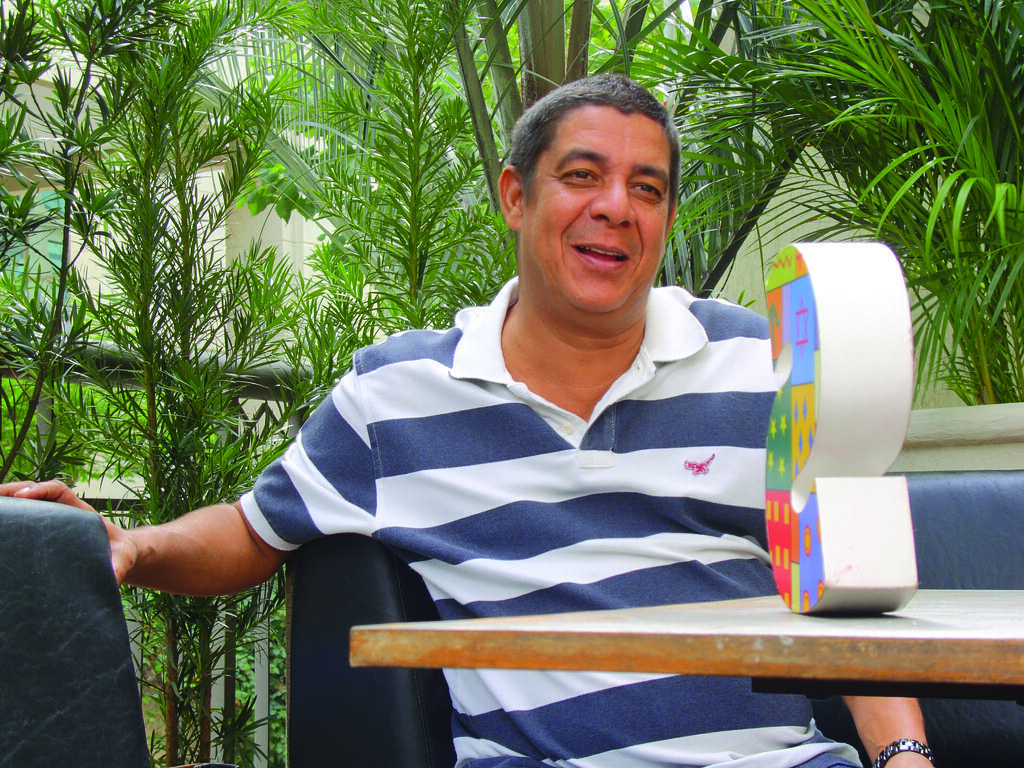
The sons and daughters of Ogum have very distinct personalities, which makes them prone to stand out in front of other people. They have a strong code of honor, are very impulsive, but at the same time are strategists.
With an expansionist character, these people have several characteristics that attract those around them. Therefore, they are very charismatic and tend to love parties and are not concerned with sophistication, being interested in peace of mind, fun and achieving their goals.
Party and confusion
The children of Ogum are very party-oriented, as you can see in some figures like the singer Zeca Pagodinho. They love a good time with friends and are very entertaining, always with jokes and stories in their sleeves, which makes them highly charismatic. They are very open and like social interactions, being more extroverted.
Regarding confusion, the son of Ogum cannot be known as a troublemaker, for they care much for honor and usually have big plans and cannot waste time on nonsense.
However, due to impulsiveness, the children of Ogum may commit rash attitudes that lead to confusion, even if rationally this was not their intention. Therefore, it is important not to confuse impulsiveness with a propensity to get into trouble.
Difficulty in getting attached
The children of Ogum are not adept at serious relationships, because they have great difficulty in attaching themselves to just one person. After all, they are highly expansionist and like to meet new personalities and even physical types.
However, don't think that a son of Ogum will be prone to cheat on you if you are in a serious relationship, although he may be tempted by his simple biological impulse. After all, sons of this Orixá, when they are balanced, care a lot about acting righteously and following the code of honor that they believe in.
Determination and conquest
Ogum is the Orixá of progress and battles, being highly related to achievements in the military field that symbolize the achievements that the person will achieve in life. Therefore, he is a figure that accompanies his children and leads them towards victory.
So, just like his head Orixá, the son of Ogum has strong determination to achieve the goals he aims for, since he vibrates in the energy of this Orixá, never forgetting his purposes and getting up quickly after an eventual fall.
Therefore, the son of Ogum does not give up on challenges and faces them with a lot of strategy and strength, since the son of this Orixá is highly strategic. Therefore, he is also very conquering and can accomplish great things in life.
These conquests can be at the professional level, with promotions and raises; at the relational level, with the cultivation of good relationships; and at the health level, with a healthy body and mind. In addition, it also applies to the emotional level and to self-knowledge, with advances in dealing with oneself, helping in moments of crisis.
A taste for simplicity
The children of Ogum do not need anything sophisticated to feel comfortable, as they like to live simply and enjoy the good things in life. They are happy to enjoy the small moments in life and are not in the least bit demanding, being great guests.
However, if the adjunct orixá of the son of Ogum is Oxum, the scenario becomes different. In contrast to Ogum, the orixá Oxum is highly vain and likes to wear only the most beautiful things, enjoying very much to enjoy the best that she can have.
Therefore, people who have Ogum as head Orixá, but also have Oxum as adjunct Orixá, can present a certain taste for more elaborate and even expensive things. After all, he will mix the personality of these two Orixás, becoming more adaptable in some cases.
To relate to Ogum
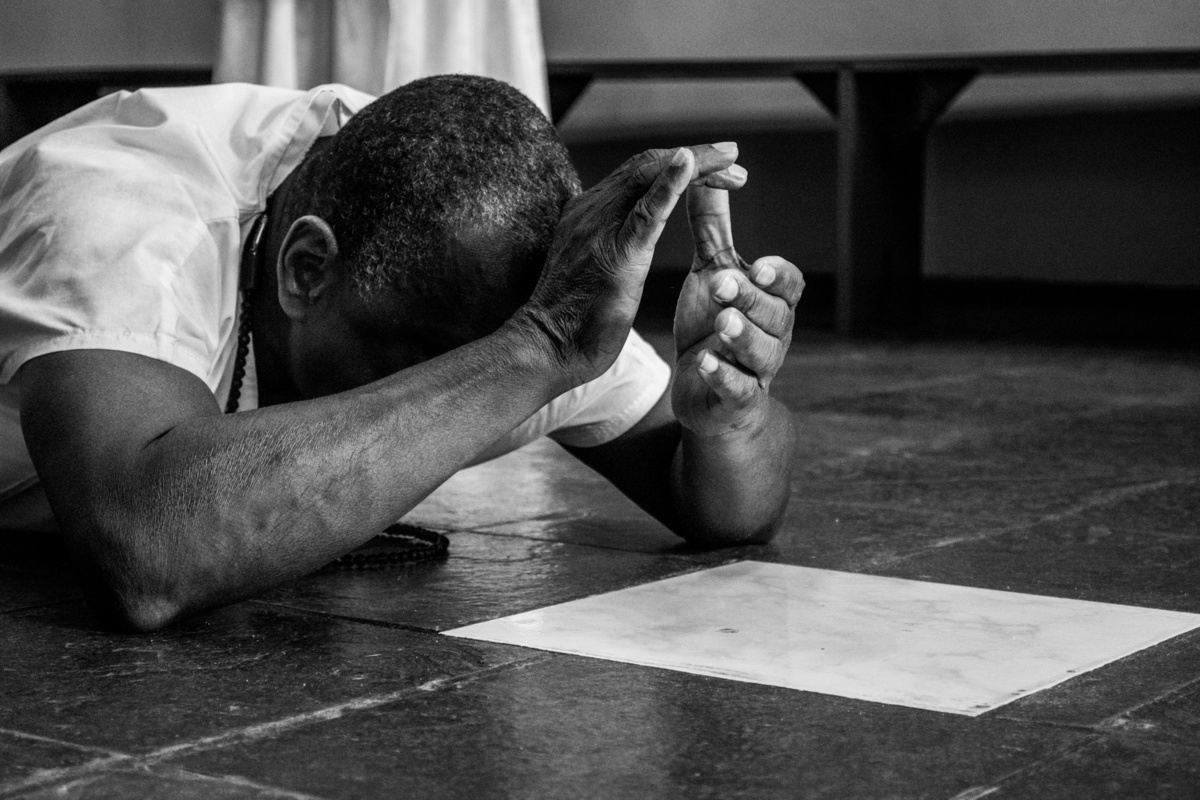
As every Orixá, Ogum also has a day of the year for him, a day of the week in which he vibrates more, salutation and own symbols, colors and elements. Understand each one of these aspects and connect better to this Orixá with greater ease to tune with the energy of this warrior.
Day of the year of Ogum
The 23rd of April is the day of Ogum, being also the reason that April is the month corresponding to this Orixá. This date arose because of the syncretism between Ogum and St. George, since this is also the day of celebration to this Catholic saint.
Ogum's day of the week
The day of the week corresponding to Ogum is Tuesday, a time of the week when Ogum's vibration is more intense, facilitating his connection with the earthly dimension. In fact, this is the reason why it is recommended to make offerings to Ogum on Tuesdays, for best results.
Salutation to Ogum
The greetings to Ogum are 'Ogunhê' or 'Ogum Iê', usually said in the phrase "Ogunhê, my father!" This term has the meaning 'Hail the Lord of War', paying homage to the warrior archetype of Ogum and all his strength and courage to win demands and bring peace to the earthly plane.
Besides these greetings, one can also say Patacori or Patakori to greet Ogum, being very present in the expression "Patakori Ogum!" This greeting means 'Hail Ogum, supreme head Orixá', being highly used in many Candomblé houses and in some Umbanda terreiros.
Symbol of Ogum
The main symbol of Ogum is the sword, used to win demands and representing the spiritual power of this Orixá as a channel for his actions. It is even the sword of Ogum that gave name to the plant, also called sword of St. George, which is famous for scaring away negative energy from the environment.
Besides the sword, there are other symbols for Ogum, such as tools, war equipment as a whole and the shield. The spear of Ogum is also another plant that emerged from the syncretism of this Orixá with Saint George, which made the spear also become a symbol of him.
Colors of Ogum
The colors of Ogum vary from house to house, but the main one is red, in accordance with his vibrant and intense character. The second most used color is king blue, and there may be variations with light blue as well, especially in Oguns related to water, in Umbanda. Finally, you may also witness the color green to symbolize Ogum in some houses.
Element of Ogum
The element of Ogum is fire, in harmony with its dynamism and strength, showing all the power of this element in the representation of this Orixá. Therefore, the vibration of Ogum is that of the fire element, having herbs considered hot and intense character in any of its characteristics.
Related to the element of fire, you can notice that even the stones of this Orixá are based on this element, the main ones being the garnet and ruby. Another important point to highlight is the color of the ribbons that are milky red.
Prayer to Ogum
The prayer, if done with sincerity and in a harmonized state of mind, will have better effect even than candles and offerings. Therefore, it is important that you connect to the prayer and ask, thank for all the love and protection you receive from Ogum. Check below this beautiful prayer for Ogum to come to your aid:
In this warrior's house
I've come a long way to pray
I pray to God for the sick
In Obatalá's faith
Ogum salve the Holy House
Those present and those absent
Save our hopes
Save the old and children
Nego came and taught
In Aruanda's booklet
And Ogum didn't forget
How to beat Quimbanda
The sadness is gone
On a warrior's sword
And the light at the break of dawn
You will shine in this yard.
Patakori Ogum! Ogunhê my Father!
Source:// dreamastral.comBesides this type of prayer, you can also find famous points in Umbanda and Candomblé that are sung prayers. There are very famous Ogum points, such as Winner of Demands, General of Umbanda, Ogum de Ronda and others. Below, you can check the lyrics of the famous Ogum point called 7 Espadas:
I got seven swords to defend me
I got Ogum in my company
I got seven swords to defend me
I got Ogum in my company
Ogum is my father
Ogum is my guide
Ogum is my father
In Zambi's faith
And the Virgin Mary
Ogum is my father
Ogum is my guide
Ogum is my father
In Zambi's faith
And the Virgin Mary
I got seven swords to defend me
I got Ogum in my company
I got seven swords to defend me
I got Ogum in my company
Ogum is my father
Ogum is my guide
Ogum is my father
In Zambi's faith
And the Virgin Mary
Ogum is my father
Ogum is my guide
Ogum is my father
In Zambi's faith
And the Virgin Mary
I got seven swords to defend me
I got Ogum in my company
I got seven swords to defend me
I got Ogum in my company
Ogum is my father
Ogum is my guide
Ogum is my father
In Zambi's faith
And the Virgin Mary
Ogum is my father
Ogum is my guide
Ogum is my father
In Zambi's faith
And the Virgin Mary
Ogum! Ogunhê!
Source:www.letras.mus.brOfferings to Ogum
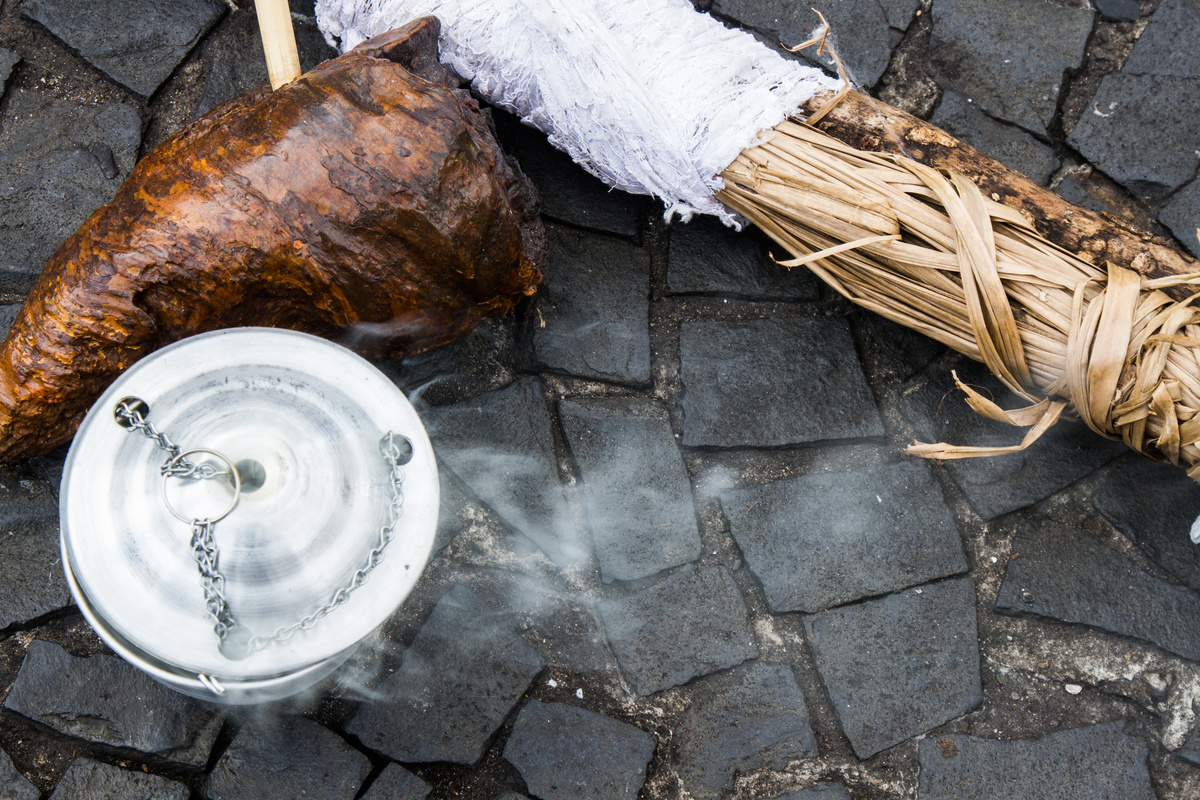
First of all, it is important to alert that offerings should only be made under the supervision of a saint father, with the accompaniment of a terreiro. Do not try to make them alone and try to worship your Orixá individually with candles and sincere prayers, because the intention is always the most powerful element of any offering.
This supervision is important because offerings are full of details and your request to the spiritual plan should be clear, with the help of this religious figure. Thus, you will avoid misinterpretations about the request of this offering in the spirituality, so that everything comes out accordingly.
So, if you already have the accompaniment of a saint father for this purpose, you can make offerings to Ogum with different purposes. Among them, there are offerings to open paths, protection, success and finding a job.
To open paths
To open your paths, the paliteiro of Ogum is the most appropriate offering and should be left on the slab for 7 days with a blue candle. If you can not put on the slab, leave it under a tree or near railroad tracks. See how to make the recipe below:
Materials:
- Yam: one unit;
- Mario sticks (or barbecue sticks or toothpicks): 1 package;
- Bee honey and dende oil: enough to water.
Directions:
1- Cook the cará, with the peel, until it gets a very soft texture;
2- Wait for it to cool and carefully peel.
3- Use a bowl to put the cará in.
4- Attach the toothpicks spread over the entire surface of the kará.
5- Irrigate with bee honey and dende oil.
For protection
To ask for protection to Ogum, either for you or for someone dear, you will make a very simple recipe with 7 candles mixed in arm and red. Check below the offering recipe for Ogum and see how it can be practical and effective.
Materials:
- Kale: seven leaves;
- Red carnations: seven units;
- Cut watermelon: one unit;
- Light beer: one unit
- Candles mixed white and red: 7 units.
Directions:
1- Place the cabbage leaves on the ground;
2- Add the watermelon pieces and cloves;
3- Decorate it your way, open the beer and spread some on top of the leaves, mentalizing the intention of your request.
To succeed
In an offering to Ogum, to be successful, you need to make it on Tuesday, up to 7 o'clock at night. This offering is very simple and will bring great results, needing only avocado, dende oil and candle. Its result will depend on the vibration and intention that you put in it.
Materials:
- Avocado: 1 unit;
- Palm oil: to taste;
- Dark blue candle: 1 unit.
Directions:
1- First of all, cut an avocado in half and remove the stone.
2- Then, rub some dende oil on the pulp.
3- Finally, place the two halves on a clean plate, placing a dark blue candle in the center.
To find a job
The offering to Ogum to find a job is full of details and requires a lot of attention from the person who makes it. However, you will find it interesting to know that it does not need any food, requiring more of your attention than financial resources. So, see below how to prepare this offering.
Materials:
Red towel: 1 unit;
Toy sword (or other material that symbolizes it): 1 unit;
Light beer: 1 can;
Red carnations: a bouquet;
St. George's Sword Leaves: some units.
Directions:
1- First, stretch your red towel on the ground and place the toy sword, or substitute, exactly in the center of this towel.
2- Once this is done, open a can of light beer and pour some of this liquid into a glass, leaving it next to the toy sword.
3- Next, place a bouquet of red carnations and some St. George's swords on the tip of the toy sword.
4- Finally, light three red and four white candles. These candles should be arranged so that each one is on a saucer, lined up on the outside of the towel. It is worth noting that you should alternate the candles, between red and white in their arrangement.
What does Ogum have to tell us?
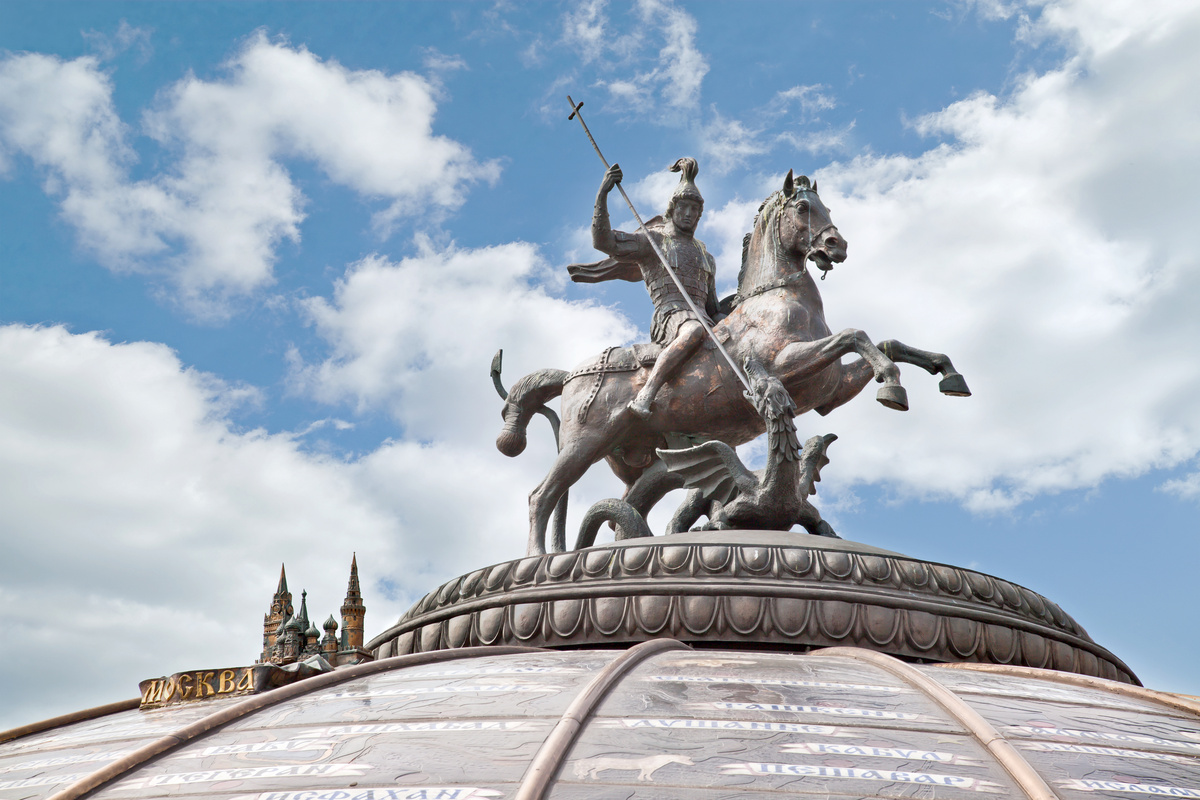
Patakori Ogum! If the Lord of War transmits a message to you, do not expect a sign of giving up or weakness, on the contrary... Ogum encourages courage and strength to face adversity, so do not give up on your purposes and work hard to achieve them, so that you maintain the discipline to perform the daily work with quality.
However, Ogum also teaches mankind that effort alone is not enough, it is necessary to have a strategy to outline your plans and execute them masterfully. In this way, you will be able to have more control over your life and enjoy the little good moments it offers in your daily life.
If you fall in front of a challenge, Ogum teaches you that defeats can become victories if you accept the stumble, but fight for it to become a conquest. Therefore, do not think that by losing a battle you will lose the war, because with effort and strategy, you can reverse adverse scenarios.
Finally, this Orixà also teaches you that it is necessary to care for and be faithful to the people you love. This is a daily and extremely satisfying battle, demanding only love, time and energy so that you can enjoy wonderful moments with loved ones or even deepen the bond between you, going through a difficult moment together.

